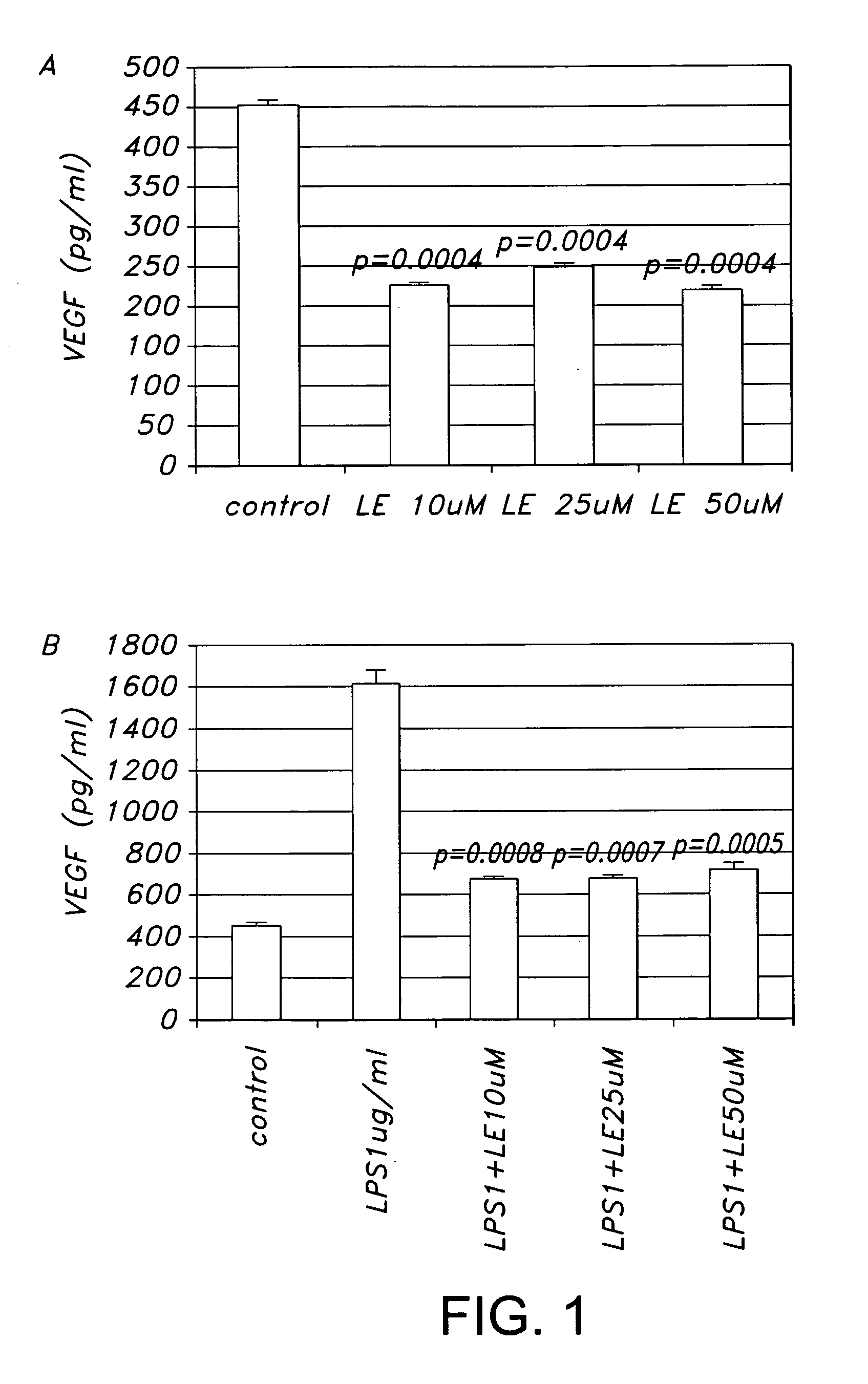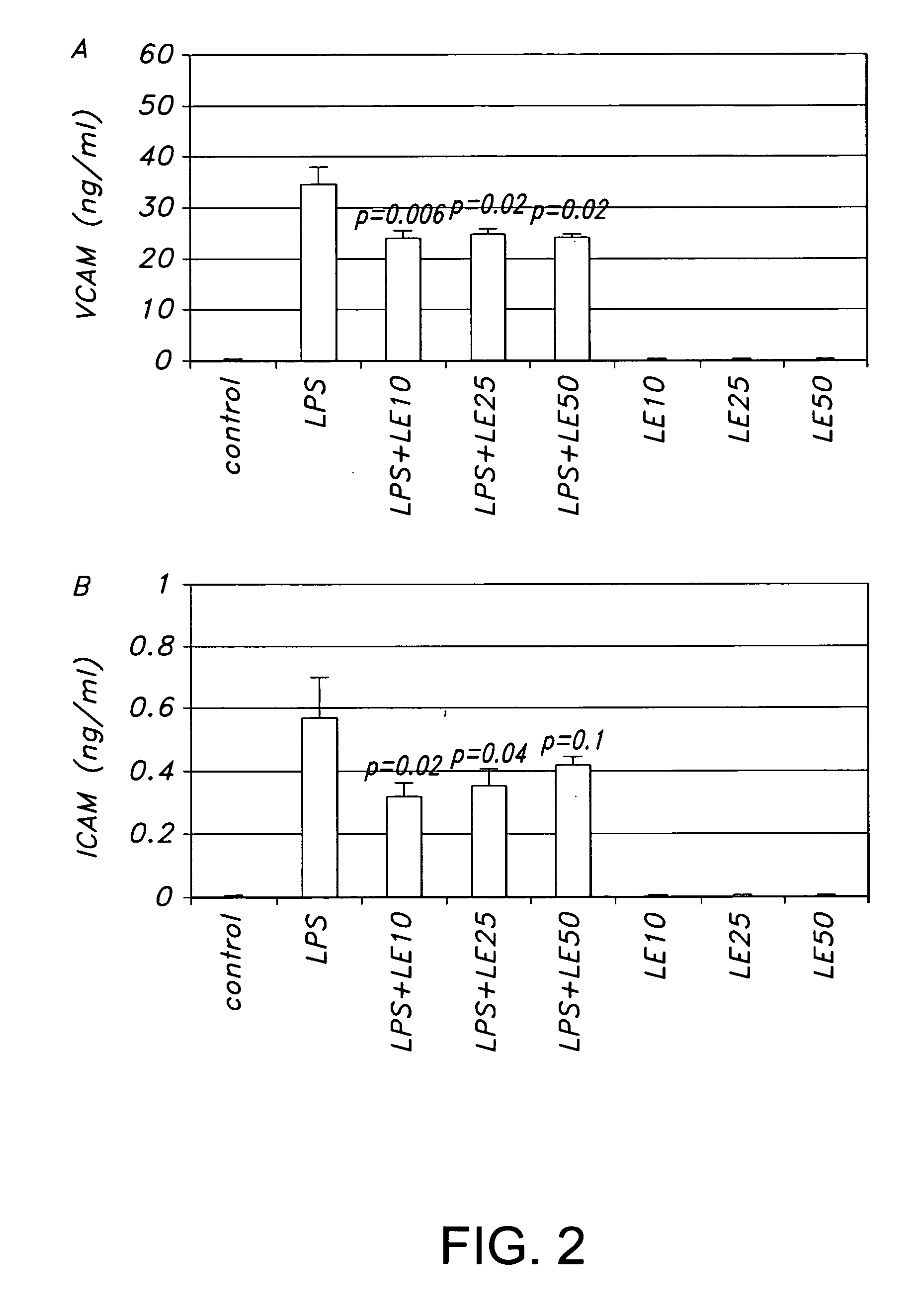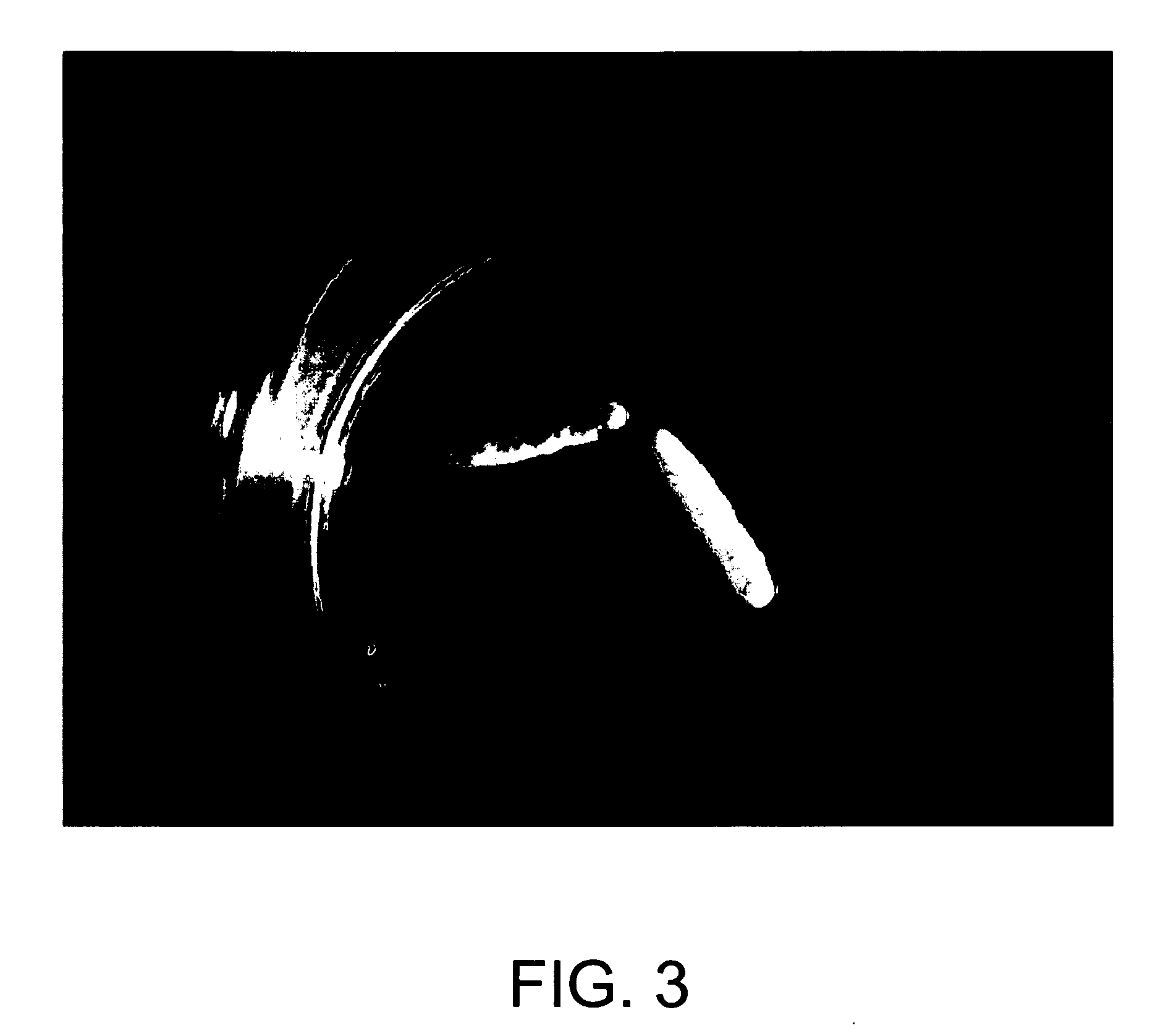Effect of Loteprednol etabonate on vascular dysfunction
a loteprednol and vascular technology, applied in the field of loteprednol etabonate on vascular dysfunction, can solve the problems of inability to treat neovascularization of the posterior segment with corticosteroids, undesirable side effects, damage to ocular tissue, etc., and achieve the effect of inhibiting formation
- Summary
- Abstract
- Description
- Claims
- Application Information
AI Technical Summary
Benefits of technology
Problems solved by technology
Method used
Image
Examples
examples
[0027] ELISA
[0028] HREC were treated with LE (10, 25 and 50 μM) for 3 days. Supernatants were removed and microcentrifuge (Beckman Microfuge R) 1000 RPM for 10 min (4° C. after which they were stored at −70° C. until needed. ELISA kits (R&D systems) for human vascular endothelial growth factor (VEGF), soluble intracellular adhesion molecule (sICAM-1) and soluble vascular cell adhesion molecule (sVCAM-1) were used according to the manufacturer's instructions.
[0029] Protein levels were measured using a Micro BCA protein assay kit (Pierce).
Western Blot Analysis
[0030] Cells were treated with LE (0, 10 & 50 μM) for either 3 days or LE (0, 10 & 50 μM) was replenished everyday for 3 days. Cells were lysed and protein levels determined / adjusted (see above). SDS PAGE was performed on cell lysates and then separated proteins were transferred on to a nitrocellulose (NC) paper (Invitrogen). NC paper was blocked with 3% non-fat milk in phosphate buffered saline (PBS) for 1 ho...
PUM
 Login to View More
Login to View More Abstract
Description
Claims
Application Information
 Login to View More
Login to View More - R&D
- Intellectual Property
- Life Sciences
- Materials
- Tech Scout
- Unparalleled Data Quality
- Higher Quality Content
- 60% Fewer Hallucinations
Browse by: Latest US Patents, China's latest patents, Technical Efficacy Thesaurus, Application Domain, Technology Topic, Popular Technical Reports.
© 2025 PatSnap. All rights reserved.Legal|Privacy policy|Modern Slavery Act Transparency Statement|Sitemap|About US| Contact US: help@patsnap.com



